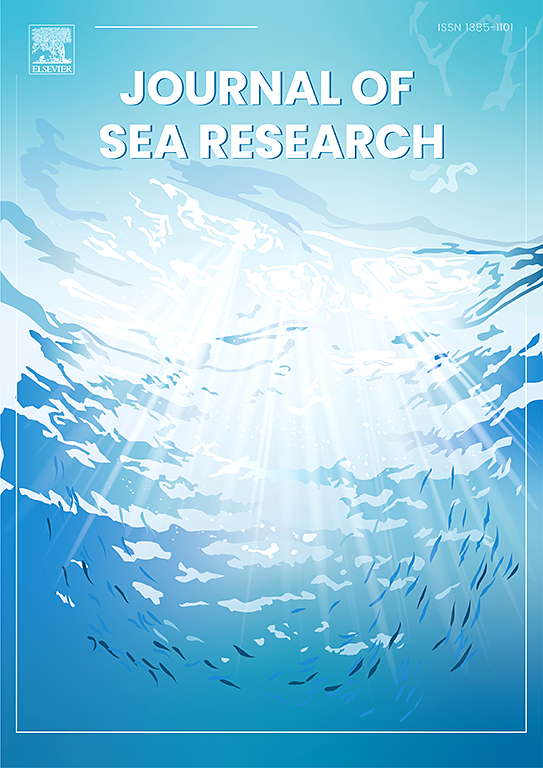The EMSO-Azores deep-sea observatory: 15 years of multidisciplinary studies of the lucky strike hydrothermal system, from sub-seafloor to the water column
IF 2.9
4区 地球科学
Q2 MARINE & FRESHWATER BIOLOGY
引用次数: 0
Abstract
Faced with climate change and the increasing interest for the deep ocean and ocean resources exploitation in particular, there is an urgent need for more comprehensive studies of deep-sea ecosystems. Hydrothermal vents are key areas for thermo-chemical exchanges between the lithosphere and hydrosphere and host unique biodiversity. Since 2010, the EMSO-Azores observatory has maintained arrays of multidisciplinary sensors at the Lucky Strike Hydrothermal Field (LSHF; 1700 m water depth), on the slow spreading mid-Atlantic ridge. This infrastructure, combined with repeated yearly sampling during the MoMARSAT maintenance cruises, aims at understanding the feedbacks between tectonics, volcanism and hydrothermal circulation, the coupling between these processes and the hydrothermal ecosystem, and their impacts on the water column. In this review, we summarize 15 years of integrated and multidisciplinary study at LSHF and discuss the societal relevance of this observatory. Hydrothermal circulation is strongly constrained by crust permeability and the availability of magmatic heat. Its variability accounts for the spatial heterogeneity of chemical fluxes and biological communities observed. Tidal modulation of seafloor pressure and near seafloor currents impact venting temperatures, species behaviour, and their physiology. Tidal currents also influence plume dynamics and facilitate particle export to the ocean. At pluri-annual scales, geological events (faulting, seismicity, and magmatic replenishment) have led to changes in fluid chemistry, impacting local microbial communities. However, results obtained over the 15 years of monitoring point to a relative stability of the overall vent system, challenging the idea that hydrothermal vents communities are highly dynamic and ephemeral habitats at decadal timescales.
emso -亚速尔群岛深海观测站:15年来从海底到水柱的lucky strike热液系统的多学科研究
面对气候变化和人们对深海特别是海洋资源开发的日益关注,迫切需要对深海生态系统进行更全面的研究。热液喷口是岩石圈和水圈热化学交换的关键区域,也是独特生物多样性的栖息地。自2010年以来,emso -亚速尔群岛天文台在缓慢扩张的大西洋中脊上的Lucky Strike热液场(LSHF; 1700米水深)维护了多学科传感器阵列。这些基础设施结合MoMARSAT维护巡航期间每年重复的采样,旨在了解构造、火山活动和热液循环之间的反馈,这些过程与热液生态系统之间的耦合,以及它们对水柱的影响。在这篇综述中,我们总结了15年来LSHF的综合和多学科研究,并讨论了这个天文台的社会意义。热液循环受地壳渗透率和岩浆热可用性的强烈制约。其变异性解释了观测到的化学通量和生物群落的空间异质性。海底压力和近海底洋流的潮汐调节影响排气温度、物种行为和它们的生理。潮流也影响羽流动力学和促进粒子出口到海洋。在多年尺度上,地质事件(断层、地震活动和岩浆补给)导致流体化学变化,影响当地微生物群落。然而,经过15年的监测结果表明,整个喷口系统相对稳定,挑战了热液喷口群落在十年时间尺度上是高度动态和短暂的栖息地的观点。
本文章由计算机程序翻译,如有差异,请以英文原文为准。
求助全文
约1分钟内获得全文
求助全文
来源期刊

Journal of Sea Research
地学-海洋学
CiteScore
3.20
自引率
5.00%
发文量
86
审稿时长
6-12 weeks
期刊介绍:
The Journal of Sea Research is an international and multidisciplinary periodical on marine research, with an emphasis on the functioning of marine ecosystems in coastal and shelf seas, including intertidal, estuarine and brackish environments. As several subdisciplines add to this aim, manuscripts are welcome from the fields of marine biology, marine chemistry, marine sedimentology and physical oceanography, provided they add to the understanding of ecosystem processes.
 求助内容:
求助内容: 应助结果提醒方式:
应助结果提醒方式:


